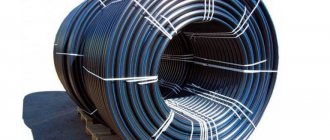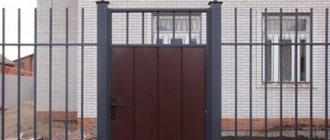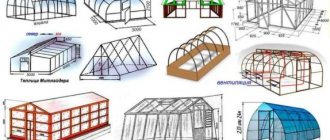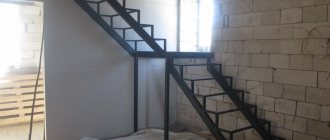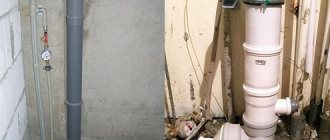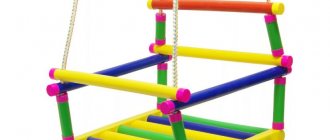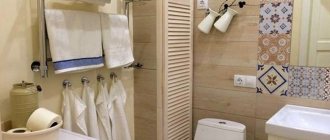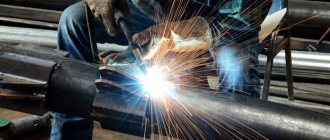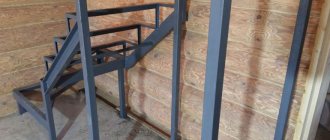- Possibility of long-term operation (more than 50 years).
- Fearless to corrosion, not afraid of aggressive environmental conditions.
- Welding parameters are very versatile. This is used by people far from the profession of welder and builder, using special equipment for welding polyethylene pipes at home. Considering that welding services are subject to payment, this option is very profitable for many people.
- Relatively affordable price.
- Strength.
- Availability of several technologies for soldering HDPE pipes.
- Equipment for welding PE pipes is easy to use.
- The instructions for welding PE pipes are simple for the average person.
- Fast welding time.
- A do-it-yourself device for soldering HDPE connections is relatively inexpensive.
- Welding HDPE pipes with your own hands is safe, subject to a small number of conditions and safety rules.
- A light weight.
- Elastic and do not crack.
- Suitable for regions with seismic activity.
- Environmentally friendly.
- Quick installation.
Types of PE pipe connections
Polyethylene pipes can be connected into a single pipeline using different methods. Moreover, each of them is suitable for specific conditions.
- Thus, joining HDPE tubes using fittings and couplings (socket welding) is used mainly for constructing the internal part of the water supply system in the house.
- DIY pipeline installation using butt welding. This method is used for installing an extended section of outdoor communications. In this case, pipes can be laid both on the surface of the soil and in a trench, followed by covering them with soil.
- Electrofusion welding. This method of connecting HDPE tubes is done using special plastic couplings with spiral elements built into them, which heat up as a result of the supply of current to it.
Let's take a closer look at each of the methods.
Effective methods of joining HDPE pipes
Technologically, HDPE pipes can be connected using two main methods – one-piece and detachable.
The first involves the use of a welding machine, the second is implemented without using one.
Each fastening method has its own advantages and disadvantages, and therefore the optimal option for joining polymer pipes is chosen based on specific conditions
Welded permanent connections enable maximum sealing, which is especially important when constructing pressure lines. Detachable connections are easy to install and make it possible to disassemble the pipeline at any time in order to change the configuration of the main line or add new bends to it.
Recommendations for proper welding of PE pipes
Polyethylene pipes can be welded using special equipment called a soldering iron. At the same time, there are a number of certain rules that will make the connection of elements smooth, high-quality and airtight.
The requirements look like this:
- Before carrying out work, it is worth studying the HDPE characteristics for each pipe and verifying their compliance from certificates. Otherwise, the tubes simply will not fit together into a single sealed structure.
- The internal lumen of the tubes (diameter) must be identical for each cut intended for installation of communications.
- Before welding with your own hands, the ends of PE pipes must be cleaned of dust and dirt, and also degreased.
- The welding procedure should be performed only in a dry, heated room, in which drafts and high humidity are excluded.
- After joining two PE elements, any movement of the line should be avoided until the pipeline has completely cooled in order to prevent disruption of the communication lumen.
- In addition, it is worth protecting the welding seam from direct sunlight.
Important: the ends of the tubes, on the opposite side from those being welded, should be securely closed to prevent cold air from entering the lumen. Low temperatures can disrupt the welding technology of HDPE pipes.
Do-it-yourself welding and installation of HDPE pipes: work technology
After installation, the system must be thoroughly checked by filling it with water. If a leak is detected, the connecting parts must be tightened. However, the press fitting in such a situation must be completely replaced.
It is necessary to check underfloor heating systems before installing the screed. In such a situation, it is prohibited to use compression assembly technology.
Secondary compression of the press fittings must not be allowed, so maximum physical force must be applied during installation.
Small diameter HDPE pipes can be bent without the use of tools.
When laying a pipeline under the surface of the earth, where the aesthetic component does not matter, it is recommended to warm up the required area with a hairdryer, and then carefully bend the pipe.
If you need to create neat bends of small diameter, after heating the product, you need to place it in a mandrel made from scrap materials. After heating, the pipes should cool for 10-15 minutes. If possible, it is advisable to use a special pipe bender.
Socket welding (socket)
Connecting pipes using couplings and fittings is shown for HDPE pipes with a diameter of up to 63 mm. For these purposes, use a hand-held household soldering iron (welding machine). PE tubes of larger diameter are welded using an industrial mechanical apparatus.
Important: before performing socket welding, you must stock up on the required number of fittings plus a small reserve in case of defects in the work.
To carry out socket welding, in addition to a soldering iron, you need to prepare a pipe cutter and a tape measure.
READ ALSO: How to heat water in a plastic pipe: a plastic pipe underground is frozen, what to do, how to solve the problem
The work of welding HDPE tubes is carried out in this way:
- The welding machine is installed on the platform and securely secured. Nozzles of the required diameter are attached to the heating surface using a special wrench. The welding machine is set to the desired temperature. For pipes made of PE (polyethylene) it should be 220-230 degrees.
- The parts prepared for welding are put on nozzles and held until the plastic is thoroughly heated. As a rule, this is 5-7 seconds.
- After the parts have warmed up, it is necessary to slowly but fully connect the two elements and hold them in this state for at least 10 seconds so that the fitting and pipe do not change their welded position.
- After such manipulations, the internal lumen of the pipe remains smooth and sealed, and the polymer processed by the welding machine forms a single whole.
Important: Excessive overheating of the pipes should be avoided. Otherwise, when connecting two elements, the plastic will simply fold into an accordion, which will disrupt both the internal lumen of the pipes and the quality of the connection.
Tip: after each welding procedure, be sure to clean off the melted polymer from the Teflon surface of the nozzles. Otherwise it will interfere with the next welding process. Moreover, you need to remove the plastic exclusively with a wooden spatula. This way you can keep the Teflon intact and unharmed. It is prohibited to remove cold plastic or metal objects.
Installation of HDPE pipes: rules for soldering polyethylene, assembly on fittings and do-it-yourself installation
Hello, our dear reader! If you are building a house or developing a plot, you will definitely have a question: what pipes to use for laying water supply and sewerage systems. In recent years, inexpensive, practical plastic pipes are increasingly crowding out metal pipes, and in our article we will talk about how to install HDPE pipes.
Advantages and disadvantages of HDPE pipes
Low pressure polyethylene is an organic polymer of ethylene. Designated PE or PE. It is white in color (thin-layer products are transparent). The concept of “low-density polyethylene” has nothing to do with the density of the material or operating conditions, but characterizes the production conditions.
HDPE pipes are painted black, gray, blue or black with blue stripes. Blue color or blue stripe indicates that the pipes can be used for potable water lines.
The scope of application of HDPE is for cold water pipelines, some aggressive media (with the exception of diluted nitric acid), and sewer systems. Diameters reach up to 1600 mm. Very widely used for cold water and sewerage pipelines.
They are used in wiring cables and wires for power supply, communications, and the Internet as casings (smooth products and corrugated).
Advantages of HDPE as a material for pipelines:
- durability - the first plastic pipelines made of HDPE have already worked for more than 50 years;
- low price;
- frost resistance - withstands freezing with water in winter and thawing in spring and maintains integrity;
- chemical inertness – resistant even to concentrated alkalis and acids; the water in the pipes does not acquire an unpleasant odor or taste;
- corrosion resistance;
- smooth walls with low adhesion prevent salts from settling on the walls;
- harmlessness to humans;
- environmental friendliness - harmless production, easy disposal;
- strength;
- flexibility - bends easily (when heated, you can even bend it with your hands);
- high impact strength, ductility and, as a result, resistance to hydraulic shocks, lack of fragility, ability to recover from deformation;
- simple maintenance – plastic is easy to clean, it does not require regular painting or anti-corrosion treatment;
- low weight facilitates transportation, folding, installation;
- easy to install - no need for complex equipment (for example, a welding machine); easy to cut; easily joined in different ways.
Disadvantages of HDPE:
- the most “inconvenient” drawback is poor ultraviolet resistance. PE is destroyed in the light and is not applicable to open laying in the light under the open sky. Of course, you can put it in covers and boxes - but this is an extra expense and a waste of time; however, the pipes will “live” in the garden for 2-3 seasons
- low heat resistance - PE pipes can only be used for cold water and at temperatures up to a maximum of 60°C (unlike polypropylene and cross-linked polyethylene pipes, which can be used for heating systems), as a result - long suspended sections of PE pipes sometimes sag in heat;
- not very high aesthetics - black-striped or black pipes in bathrooms and kitchens are not our taste;
- working pressure up to 20 MPa limits the use of polyethylene in industry;
- reinforced pipes have less flexibility.
Installation methods
Installation of polyethylene lines can be done using a detachable or permanent method. The choice of method depends on the diameter and sealing requirements.
Butt welding of pipes
Butt welding is carried out only on products with a wall thickness of at least 3 mm, preferably 5 mm or more. This is a very common, simple, cheap and reliable docking method. It is used practically on pipes with a diameter of 50 mm or more (with smaller diameters the wall thickness is insufficient for welding).
A type of welding is butt welding of all kinds of adapter fittings onto metal for connecting metering units or water points...
Permanent connection
Permanent connections are used where increased requirements for the tightness of connections are required (for example, gas pipelines) and on large diameters, where the connection through fittings is not entirely reliable. For connecting large diameters this is the only possible way.
HDPE pipes are connected using diffusion butt welding (and diffusion welding of fittings) and welding using thermistor couplings.
Electrofusion welding is a very expensive pleasure and when laying a system, for example, a water supply, the price of the couplings will be higher than the cost of the rest of the system. For large diameters, the cost of couplings is generally exorbitant, as is the cost of the welding machine.
The soldering method itself is simple: the pipes are cut, stripped, inserted into the coupling, the coupling with heating elements is connected to the welding machine and heated, the inner surface of the coupling and the outer surface of the pipe blank are soldered into one whole. But perfection is very expensive - and despite the simplicity of the method, we will not describe its technology in detail.
Plug-in connection
Detachable connections using fittings and detachable couplings are used on diameters up to 315 mm, preferably used on small diameters - up to 110 mm. On large diameters, due to the high plasticity of HDPE, the connection is less reliable and may leak. There are two ways of detachable connections: using fittings and couplings. Advantages of the method:
- quick and simple installation, accessible even to a non-specialist;
- affordable price - couplings and fittings are not too expensive;
- high tightness, sufficient even for gas pipelines;
- can be used in inconvenient places or with some other difficulties (for example, you can assemble a pipeline under water).
With fittings
There are compression fittings, press fittings (press-fitting), push fittings.
Assembly using compression fittings is very simple, without special tools and provides a reliable dismountable connection. The fitting consists of a collet (threaded body), thrust and O-rings, and external crimp nuts. The pipe is firmly clamped between the body and the crimp nut, the connection is sealed due to the plasticity of the HDPE and the O-ring.
Butt welding
You can also butt weld HDPE pipes with your own hands. Butt welding is performed using special equipment with a mechanical or hydraulic drive. Such a welding machine will allow you to join two elements of the tubes until they are completely and tightly connected. The most popular devices are those that have software control. Such equipment is characterized by full automation and the ability to control the welding process without operator intervention in terms of physical effort.
READ ALSO: How to stretch a cable in a HDPE pipe: will it be possible to insert and push it through with a vacuum cleaner, how to pull a heating wire through electrical ducts?
Before doing the work yourself, you should select HDPE pipes with uniform technical characteristics. It is advisable to weld tubes even from the same batch. Since here the polymer is joined at the molecular level, this approach will make the weld more airtight and reliable.
Important: tubes with a wall thickness of at least 5 mm and a diameter exceeding 50 mm are suitable for butt welding.
The principle of butt welding is to heat the ends of the pipe on a special plate. After melting, the PE plate between the ends of the two pipes being welded is removed and the elements are mechanically compressed until the polymer is completely mixed and soldered. After which the pipes must be allowed to cool completely.
Important: when marking tubes and cutting them, it is worth taking into account the technical reduction in the length of the pipe after welding. In order to correctly calculate the length reduction factor, you can use the data below:
- So, for pipes with a cross-section of 20 mm, the melting length (welding depth) will be 14.5 mm;
- Elements 25 mm - 16 mm;
- For tubes with a diameter of 32 mm - 18 mm;
- For tubes with a cross section of 40 mm - 20 mm;
- Pipes with a diameter of 50 mm - 23 mm.
Installation and fastening of welded pipes and parts
To protect against accidental slippage during welding and cooling, the pipes are fixed in the positioner clamps. The positioner prevents the pipe from sagging and ensures the necessary alignment of the welded pipes and electrical fittings during the welding process to avoid lack of penetration. The positioner also prevents bending forces from being applied to the pipe ends entering the welding area of the electrical fitting. Securing the pipes in the positioner is a prerequisite for the welding process.
| Positioner for pipes with a diameter of 110-250mm |
Depending on the mechanism for fixing the pipes, positioners are divided into two types :
- strap positioners;
- positioners with the function of removing pipe ovality.
Strap positioner
The strap positioner is designed for pipes with a maximum diameter of up to 500 mm. Serves only for fixing pipes with any electrical fittings (coupling, bend, tee) during the welding process. The folding frame of the positioner allows you to weld pipes with any bend angle.
| Strap positioner |
Additional inserts in the main supports solve the problem of simultaneous welding of pipes of different diameters with transition couplings, as well as with unequal tees.
| Inserts for strap positioner |
The positioners can be equipped with a device for precise pipe cutting in the field using a hand saw.
| Device for precise cutting of pipes on a belt positioner |
The simplest and most reliable strap mechanism for fixing pipes in the positioner only facilitates the preparatory work of the welder.
Strap Positioner for Saddle Bends
Designed for installation of saddle bends, lining pipes to the main pipe.
| Positioner for saddle taps |
During welding, it allows you to tightly press the elbow to the pipe being welded and prevents the saddle from moving out of the welding zone. The positioner is used for all types of saddles with installation on a welded pipe with a diameter of 63–500 mm:
| Practical application of the saddle positioner |
If this positioner is not used during installation, there is a possibility that the saddle will not be welded.
| In this case, the saddle positioner was not used |
Positioner with tube de-ovality function
These positioners are designed to work with pipes that have a large ovality. After being secured in the positioner, the ends of the pipes take on the correct circle and are thereby secured against accidental movement during the welding process.
| Appearance of the positioner with the function of removing pipe ovality |
Positioners with the function of removing out-of-roundness of pipe ends are produced up to 1200 mm.
| Positioner appearance | Diameter of fixed pipes, mm |
| 63–180 | |
| 110–250 | |
| 225–315 | |
| 315–500 | |
| 400-1200 |
Positioners are necessary so that the axes of the pipes and parts being welded are installed parallel and without distortions. During welding, external loads should not be transferred to the ends of the welded pipes located in the electric welding fitting.
The pipes must remain in the positioner until the welding process is completed. Pipes should be removed from the positioner clamps only after the welded joint (electrical fitting) has completely cooled.
Rounding plates
The correct installation of pipes coaxially to each other is influenced by the ovality of the welded pipes. Due to the large ovality of the pipes, it is impossible to install the electrical fitting correctly. If an oval pipe is used during installation, a gap will form between the pipe and the fitting, which can negatively affect the quality of welding (since welding pressure will not be created). Ovality occurs due to long-term storage of pipes or when they are supplied in coils. To remove the ovality of PE pipes, rounding plates are used.
There are two types of pads:
- mechanical with manual clamping, used for PE pipes with a diameter of 63–400 mm;
| Pads for removing ovality of PE pipes |
- with hydraulic drive, used for PE pipes with a diameter of 400–1200 mm.
| Hydraulic rounding pad |
| Practical application of hydraulic lining |
According to SP 42-103-2003:
“If the welded ends of the pipes have an ovality of more than 1.5% of the outer diameter of the pipe or ≥ 1.5 mm, then before assembling the joint, to give them a rounded shape, use inventory calibrating clamps (rounding pads), which are installed on the pipes at a distance of 15–30 mm from the marks."
Roller bearings
Designed to maintain pipes in a horizontal position and to align them with the fitting during welding.
It is expedient and convenient to use roller supports with the ability to adjust the height of the pipe.
| Appearance of a roller support with the ability to adjust the height of the pipe lift |
Degreasing wipes
A mandatory procedure in the regulations for preparing pipes before electrofusion welding is degreasing the outer surfaces of the PE pipes being welded. The surface of the pipe is degreased immediately before installing the fitting on the pipe, and the degreasing liquid must completely evaporate before welding begins. Only the cleaned area of the polyethylene pipe is wiped.
For wiping, use non-lint cloths soaked in industrial alcohol or special alcohol-containing cloths.
| Degreasing wipes |
It is unacceptable to use white spirit and acetone to degrease polyethylene pipes.
During installation, do not allow dirt, dust, or water to get into the welding zone.
| Dirt in the welding area |
Weld joint marking
Each welding joint on a polyethylene pipeline must be marked.
Initially, the marking is applied before installing the fitting on the pipe; a marker marks the depth to which the fitting must be placed on the pipe. It is better to mark the depth after cleaning and degreasing. If you make markings in advance, there is a possibility that the markings will be erased during degreasing. The next – final – marking must be done after welding. In the connection area, the number of the connection (joint) and the code of the operator who performed this welding are indicated.
| Pencil marker |
Marking is done with a bright-colored marker pencil.
Electrofusion welding
Welding of polyethylene pipes using the electrofusion method is used if the pipeline is installed in a confined space where the technician is not able to move freely. In addition, this welding method is applicable for connecting tubes with different wall thicknesses, different diameters, or for installing sewerage systems.
READ ALSO: Prices FER-16 Internal pipelines
Electrofusion welding of polyethylene pipes is considered the most expensive, but the joints obtained in this way are suitable for operation at a pressure of 16 atm. The work of joining tubes using this method is carried out using special couplings, the design of which has a heating spiral element.
Welding is performed as follows:
- First of all, prepare all the necessary pipe sections with their obligatory degreasing and cleaning of dirt and dust. The inside of the electric coupling is treated in the same way. It is advisable to use special wipes impregnated with an alcohol volatile substance for these purposes.
- The ends of the welded pipes should be freed from industrial oxide by mechanical cleaning. In this case, the same ends should be cut evenly so that the connection is as tight as possible and prevents plastic from leaking inside the tubes.
- The pipes are placed in the positioner and an electric coupling is put on the joint. The ends of the pipes on the opposite side of the main should be closed at the time of welding with your own hands to avoid heat loss.
- An electric current is supplied to the terminals of the put-on electric coupling and the process is completed until the PE pipe melts and its connection is high-quality.
Important: the HDPE pipe welded in this way must remain motionless until it cools completely. Otherwise, there is a risk of breaking the geometry of the weld.
Nuances of preliminary preparation for welding work
When talking about how to weld polyethylene pipes at home, you need to take into account not only the rules of use, but also safety precautions when working with welding equipment.
The key to success is the preparatory work:
- Each unit of welding equipment must be thoroughly cleaned and checked for defects that may affect the quality and safety of the work performed.
- All wiring and grounding should be checked for defective or missing insulation.
- Fuel units must be refueled, or old, stagnant fuel must be removed from them and new fuel must be added.
- It is imperative to carry out a test run of the installation to ensure its functionality.
- The oil level in the hydraulic system of the welding machine must be checked and the same actions performed with it as with fuel.
- If the welding machine is mobile, it must be moved freely so that the work can be carried out without hitches and without risk to the operator of the installation.
- The knives of the facing device must be sharpened to perfection so that the process of processing pipes and fittings occurs quickly, and the result is high-quality products.
- Each control and measuring device must be in good working order.
- When working with HDPE, it is necessary to purchase in advance the required quantity of clamps and reducing inserts, the diameter of which must correspond to the cross-section of the pipes.
- Every part exposed to friction should be thoroughly lubricated. However, even when choosing a lubricant mixture, you need to pay attention to the requirements put forward by pipe manufacturers.
Bottom line
By following all the rules and instructions given in the article, you can obtain a high-quality connection for polyethylene pipes. The method of welding a polyethylene pipe must be selected according to the main criteria: ease of implementation and accessibility for the employee from the financial side of the issue. It is best to entrust the work to a specialist who will take responsibility for all stages - from purchasing the necessary materials and equipment to carrying out welding work and putting the system into operation.
We control the quality of work
Welding polyethylene pipes, although not difficult, still requires careful control over the quality of the weld. Since the polymer has increased viscosity when melted, the seam may not always be smooth. Therefore, when performing work, you should carefully examine the results:
- The resulting weld should be approximately straight. Excessive hollowing or protrusion of the seam is excluded.
- The seam itself should not shift critically relative to the level of the main line as a whole. Inward displacement (deflection) is permissible within 10% of the wall thickness of the tube being welded. Convexity is allowed within 2.5 mm for a pipe with 5 mm walls. For tube wall thicknesses of 6-20 mm, the thickness of the convex is allowed within 5 mm.
Compliance with these control parameters will allow you to obtain a working and properly welded line that will last for decades.
